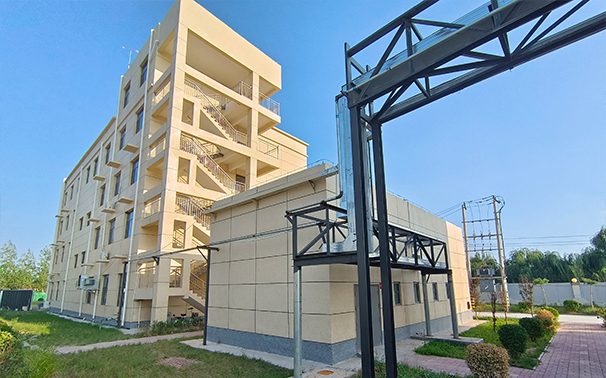Synthesis and Applications of Polycarboxylic Compounds in Modern Chemistry
Understanding Polycarboxylic Compounds Importance and Applications
Polycarboxylic compounds, characterized by the presence of multiple carboxyl (-COOH) functional groups, are a significant class of organic molecules that play essential roles in various chemical processes and industrial applications. Their unique structure imparts distinct chemical properties, making them vital in fields ranging from chemistry and biochemistry to materials science and environmental technology.
Structure and Classification
Polycarboxylic acids can be classified based on the number of carboxyl groups they contain. Dicarboxylic acids, such as oxalic acid and succinic acid, contain two carboxyl groups. Similarly, tricarboxylic acids, like citric acid, include three, while polycarboxylic acids may have four or more carboxyl groups. The presence of multiple carboxyl groups allows for a range of interactions with other molecules, influencing solubility, acidity, and reactivity.
The molecular structure of polycarboxylic acids often leads to the formation of complexes with metal ions. For instance, many polycarboxylic acids can chelate metal ions due to their multiple binding sites, a property that can be exploited in various applications, including metal extraction and pollution remediation.
Chemical Properties
Polycarboxylic compounds exhibit unique chemical properties, such as increased acidity in comparison to their monocarboxylic counterparts. The presence of multiple carboxyl groups allows for greater stabilization of the conjugate base formed during deprotonation, enhancing their acidic strength. This property is particularly useful in the formulation of buffer solutions in biochemical applications.
Additionally, polycarboxylic acids engage in various chemical reactions, including esterification, amidation, and polymerization. Their ability to form anhydrides can be leveraged in synthesizing complex molecules and polymers. Moreover, when reacted with alcohols, they can form esters, which are commonly utilized in flavors and fragrances.
Applications in Industrial Chemistry
polycarboxylic

One of the most significant applications of polycarboxylic acids lies in the field of polymer chemistry. They serve as important monomers in the production of various polymers such as polyesters and polyamides. For example, maleic anhydride, a polycarboxylic acid derivative, is widely used in the manufacture of unsaturated polyester resins, which are critical in the automotive and construction industries.
Polycarboxylic acids are also essential in the manufacture of surfactants and detergents. Their ability to lower the surface tension of water makes them effective in cleaning products, wherein they assist in emulsifying and dispersing soil and grease. Moreover, they are employed in the formulation of water-soluble fertilizers, enhancing nutrient solubility and uptake in plants.
Role in Biochemistry
In the realm of biochemistry, polycarboxylic acids serve essential functions. Citric acid, a tricarboxylic acid, is central to the citric acid cycle, a fundamental metabolic pathway responsible for energy production in aerobic organisms. Other polycarboxylic acids, such as amino acids (which contain both amino and carboxylic groups), are the building blocks of proteins, vital for cellular structure and enzymatic functions.
Moreover, polycarboxylic compounds are explored for their potential therapeutic applications. Research indicates that some of these acids exhibit antioxidant properties, which may contribute to the prevention of oxidative stress-related diseases. Ongoing studies aim to understand their roles in cellular signaling pathways and potential implications in drug design.
Environmental Implications
The environmental applications of polycarboxylic acids are increasingly gaining attention. Their ability to chelate metal ions has made them useful in remediation efforts for heavy metal contamination. Furthermore, biobased polycarboxylic acids can serve as eco-friendly alternatives in various industrial processes, promoting sustainability and reducing reliance on petrochemical-derived products.
Conclusion
Polycarboxylic compounds are a diverse and critical class of organic molecules with extensive applications across various industries and scientific fields. Their unique chemical properties, stemming from multiple carboxyl groups, provide them with functionality that is crucial in materials science, biochemistry, and environmental applications. As research progresses, the potential for developing innovative uses for polycarboxylic acids continues to expand, underscoring their importance in modern chemistry and industry. Understanding these compounds not only enhances our knowledge of chemistry but also paves the way for advancements in sustainable technologies and biochemical applications, reflecting their relevance in the future of science and industry.
-
LK-319 Special Scale And Corrosion Inhibitor For Steel Plants: Advanced Solutions for Industrial Water SystemsNewsAug.22,2025
-
Flocculant Water Treatment: Essential Chemical Solutions for Purification ProcessesNewsAug.22,2025
-
Isothiazolinones: Versatile Microbial Control Agents for Industrial and Consumer ApplicationsNewsAug.22,2025
-
Scale Inhibitor: Key Solutions for Water System Scale PreventionNewsAug.22,2025
-
Organophosphonates: Versatile Scale Inhibitors for Industrial Water SystemsNewsAug.22,2025
-
Scale and Corrosion Inhibitor: Essential Chemical Solutions for Water System MaintenanceNewsAug.22,2025





